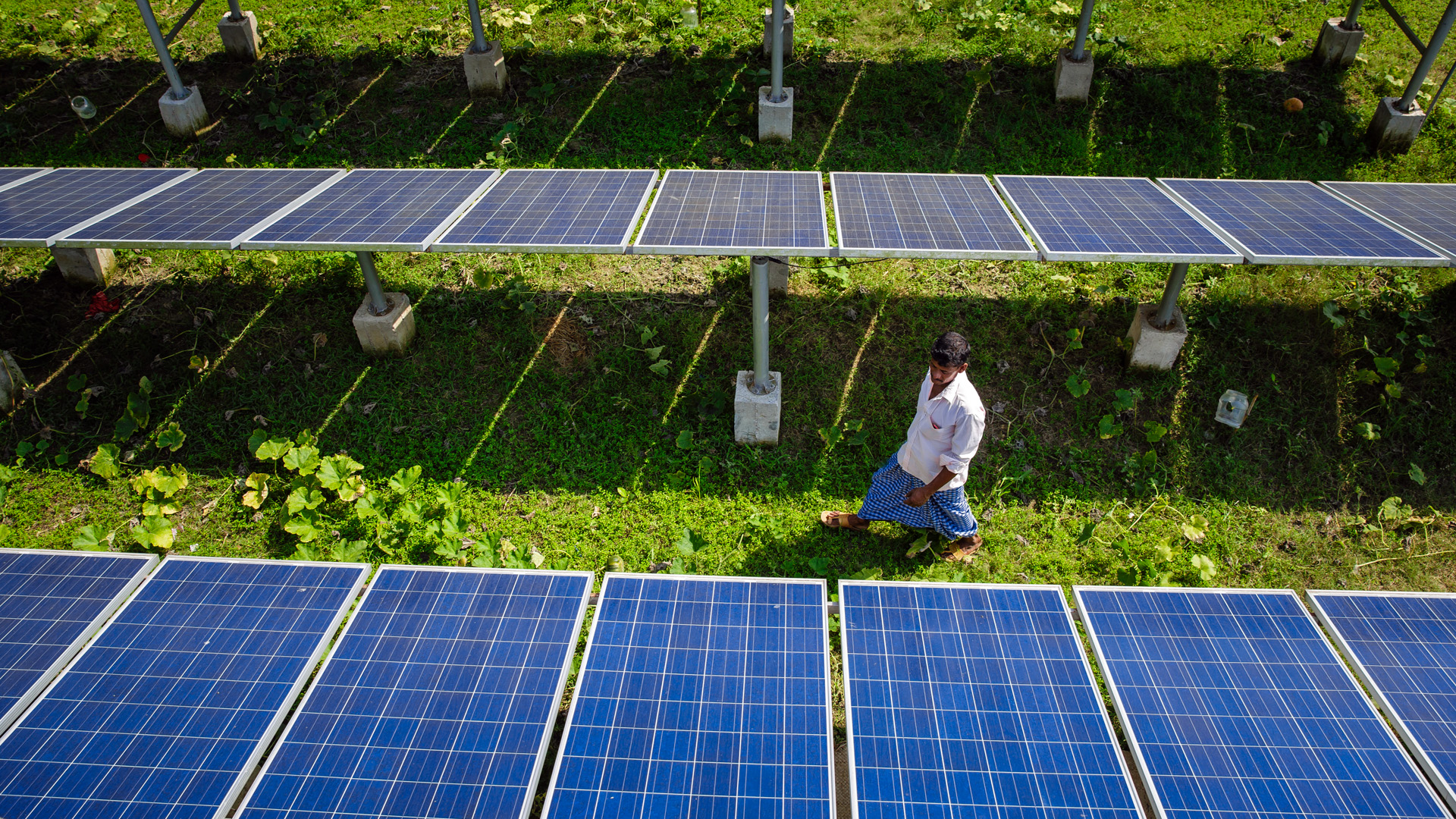Solar power system to supply electricity to a groundwater pump in the southwest of Bangladesh. The pumped groundwater is used to irrigate the adjacent fields.
Copyright© Thomas Trutschel/photothek.net
Solar power Using solar power
There are two ways to use solar energy: photovoltaics and solar thermal energy.
Photovoltaics
Photovoltaics is the direct conversion of solar energy into direct current power. The costs for photovoltaic systems have gone down significantly and they can be expected to fall even more in the future. Solar modules are thought to be robust and low maintenance. They are especially suited for decentralised power supply, for instance in rural regions.
Under its Financial Cooperation the BMZ is promoting photovoltaic systems that supply power to remote villages, for example. Through Technical Cooperation governments and authorities are receiving advice on developing a favourable framework to promote the much needed investment in solar energy. The cooperation with companies and associations centres on questions about market development and upskilling and training skilled workers.
Solar thermal applications
Solar thermal systems harness the sun’s energy and convert it into heat. The sun’s rays are used to heat a transfer fluid, such as water, air or a special oil. The liquid releases the collected energy into heating systems or it is used in special solar thermal power plants to generate power.
As at: 25/07/2023
